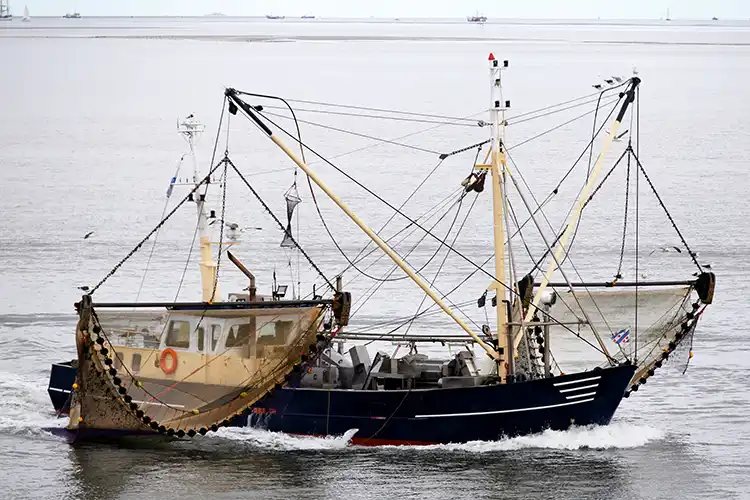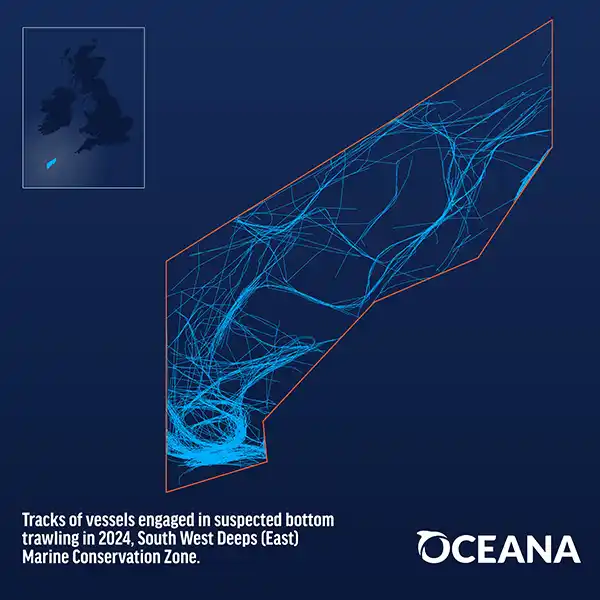
Oceana report slams the UK’s marine protection as ‘a sham’ — with most designated areas still open to destructive fishing practices
By
A new report has laid bare the startling extent of bottom trawling within the UK’s offshore marine protected areas (MPAs), casting doubt on the country’s conservation commitments. According to ocean advocacy group Oceana, more than 20,600 hours of suspected bottom trawling took place in these supposedly safeguarded waters in 2024 — equivalent to gouging track marks around the UK’s coastline eight times over.
The report, titled The Trawled Truth, reveals that only 38 of the UK’s 377 designated MPAs are fully protected by law from this highly destructive fishing method. With bottom trawling permitted in 90 per cent of sites, Oceana says the current protections amount to little more than a ‘sham’.
A devastating toll on the seabed
Bottom trawling involves dragging heavy metal gear and weighted nets — sometimes weighing several tonnes — across the ocean floor. It indiscriminately captures marine life and tears up habitats, an approach that has left most of the UK’s seabed environments in what scientists call a ‘poor’ state.
Oceana’s satellite tracking data shows that French vessels were responsible for 55 per cent of the trawling activity, while UK vessels accounted for 19 per cent. The remaining activity was spread across a range of other nations.
Three MPAs were singled out as the most heavily trawled: the Western Channel and Southwest Deeps (East) off Cornwall, and the West of Scotland MPA. Combined, these areas saw 8,597 hours of suspected trawling last year. These marine zones are home to a rich diversity of wildlife — from slow-growing corals and ancient orange roughy to commercially vital spawning grounds for blue ling.

Calls for a full ban
‘The UK currently has the worst of all worlds: the illusion of protection masking ongoing destruction,’ said Alyx Elliott, Campaigns Director at Oceana UK. ‘Across our “protected” havens for nature, weighted nets are clear-felling the forests of the ocean and butchering our marine wildlife wholesale. Unless the government takes action, our marine protected areas will remain a sham.’
Oceana argues that even these figures underestimate the real scale of the damage. Inshore MPAs weren’t included in the analysis, and data from Norwegian vessels — due to gear-tracking limitations — was excluded.
Banning bottom trawling entirely in offshore MPAs, the report claims, would deliver benefits worth up to £3.5 billion over 20 years, factoring in climate regulation, fisheries, and tourism. It would also be popular with the public: eight in ten UK adults support such a ban, and nearly two-thirds mistakenly believe that bottom trawling is already banned in MPAs.

Protection in name only?
The current patchwork of protection focuses on safeguarding specific features — like reefs — rather than entire ecosystems. This ‘fragmented’ approach, says marine ecologist Dr Emma Sheehan of the University of Plymouth, stifles any meaningful chance of recovery and undermines efforts to restore marine biodiversity.
‘The whole-site approach is essential,’ she explains. ‘It’s not just about saving one type of habitat — it’s about letting ecosystems rejuvenate and fulfil their role in regulating the climate, supporting fisheries, and protecting biodiversity.’
Evidence from Lyme Bay, England, supports this. Areas where entire sites were protected saw a 95 per cent rise in marine life, compared to just 15 per cent in partially protected zones. Full-site bans are also three times cheaper to enforce, according to the Scottish Government.
Despite pledging to pass legislation banning bottom trawling in MPAs by the end of 2024, the UK Government has missed its deadline — and set no new one.




